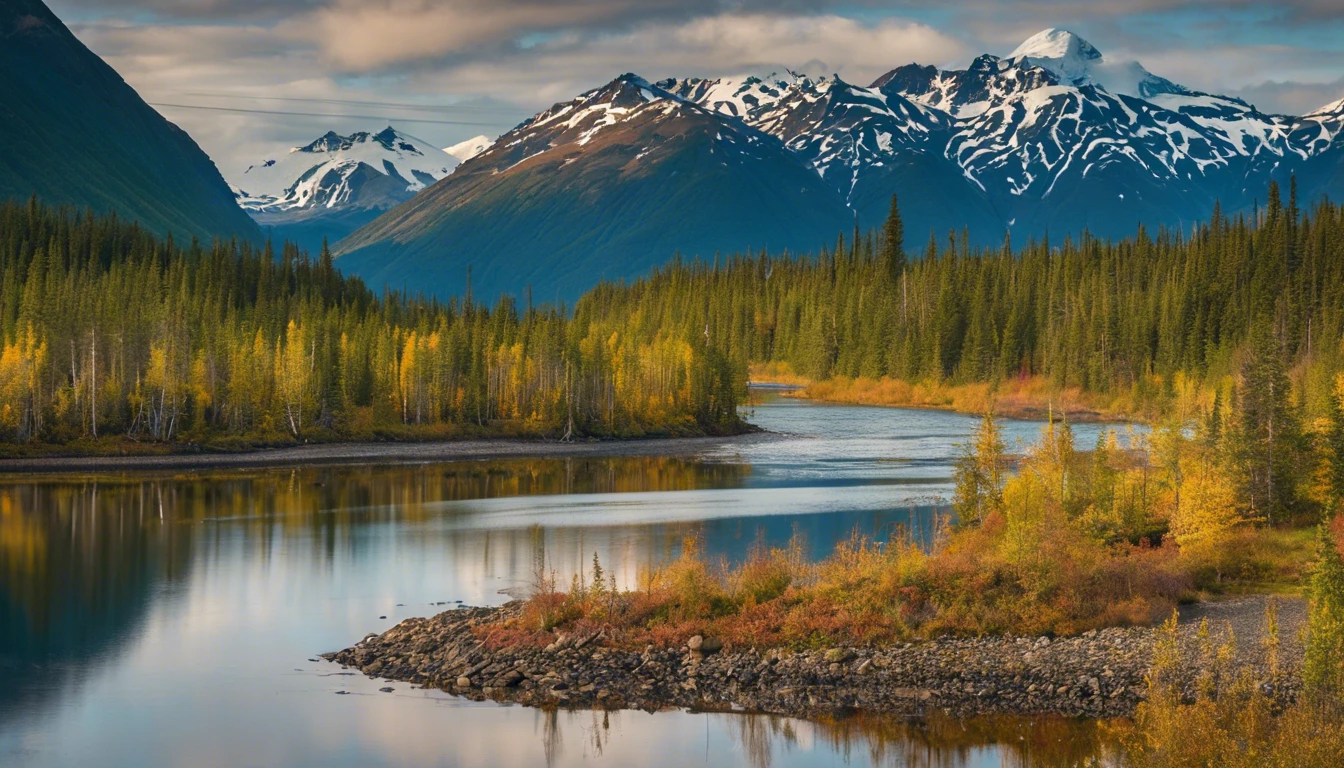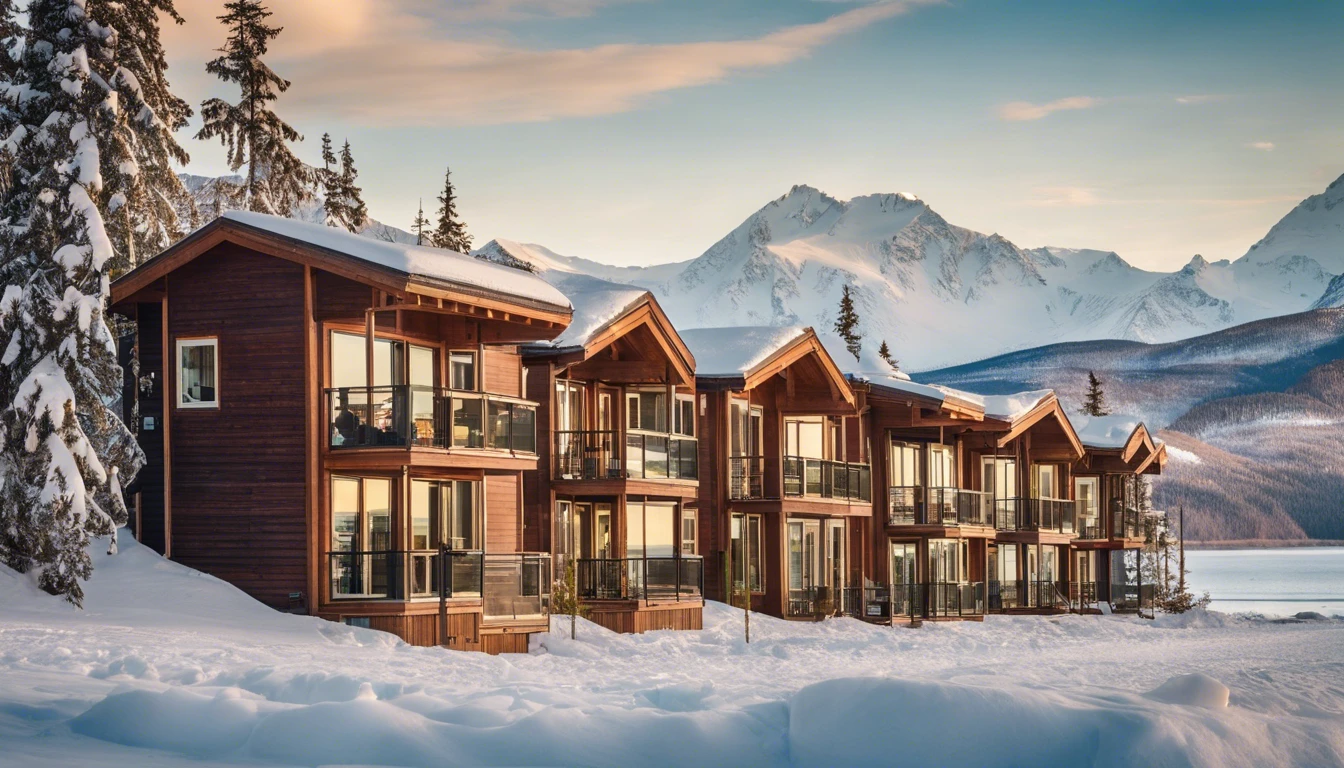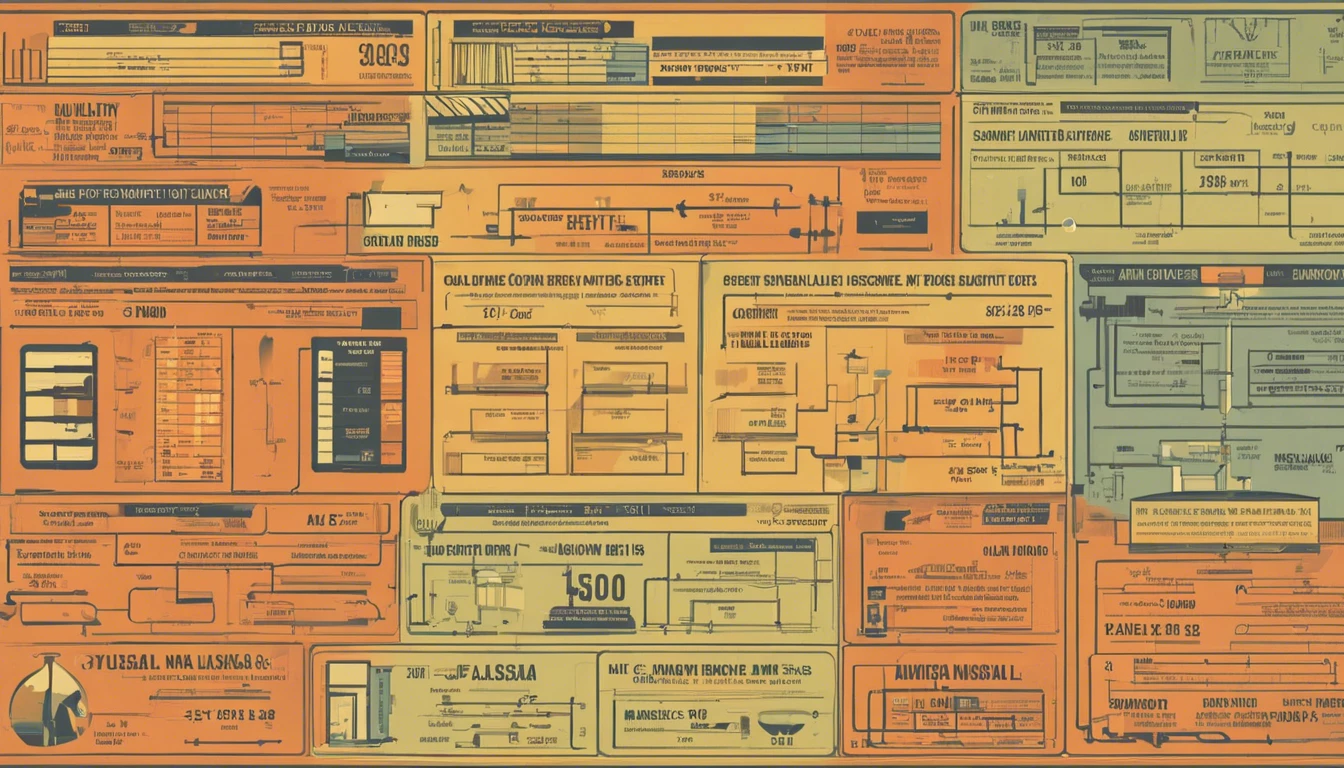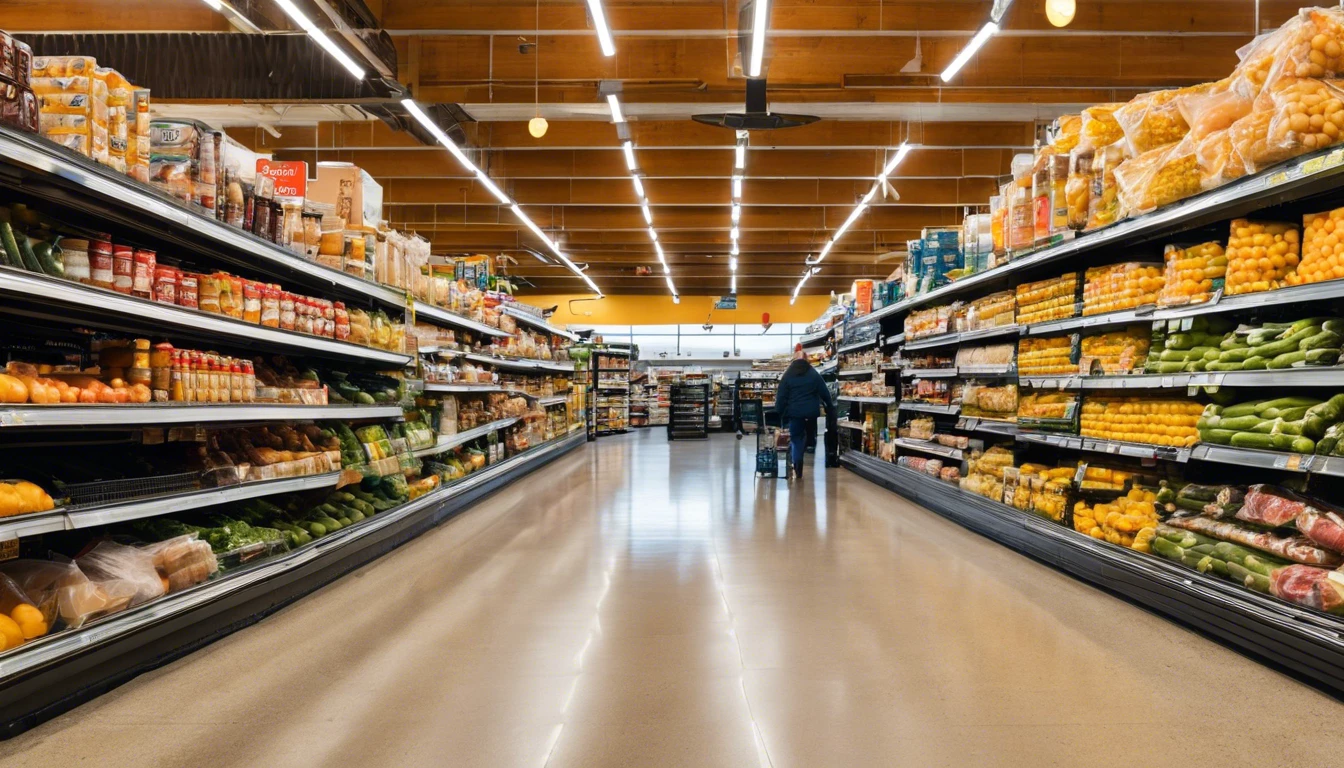Is it expensive to live in Alaska?
Yes, it is expensive to live in Alaska. High costs are associated with housing, utilities, groceries, and transportation due to the state's remote location and harsh climate.

Yes, it is expensive to live in Alaska. High costs are associated with housing, utilities, groceries, and transportation due to the state's remote location and harsh climate.

When you're planning your move to Alaska, there are quite a few costs you'll need to factor into your budget. Because of Alaska's remote location, moving your belongings isn't as simple as loading up a truck and driving across state lines. Most people use U-Haul for their move, and the cost of this can vary significantly.
These figures are just for the U-Haul rental, though. You'll also need to budget for gas and hotel stays for your journey.
So, when you add everything together, the total cost of moving to Alaska typically ranges from $5,192 to $8,692, excluding food and unforeseen expenses like flat tires. It's a significant sum, but remember that it's a one-time cost. Once you've made the move, you won't have these expenses again source.
However, there are ways to cut down these costs. For instance, selling most of your belongings and moving with minimal items can significantly reduce your moving expenses. Depending on your preferences and the time of year, you could choose to drive the entire Alaska Highway, which, while more costly in terms of gasoline and auto repairs, offers an unforgettable experience with wildlife viewing opportunities. Alternatively, using the Alaska Marine Ferry system from Prince Rupert BC to Haines AK can save wear and tear on your vehicle source.
Once you have relocated, the cost of living in the state can vary depending on the location. For instance, neighborhoods in Homer, AK, such as Diamond Ridge and Halibut Cove, offer unique blends of scenic beauty, community, and outdoor activities. Diamond Ridge, with a population of 1,330 as of the 2020 census, boasts a median household income of $87,464 and a cost of living index of 107.7. Halibut Cove, accessible only by boat or floatplane, saw its population increase to 205 in 2021 and has a median household income of $73,000.
Other locations like Anchor Point and Fritz Creek offer a supportive community with median household incomes of $54,024 and $68,828 respectively, and a real estate market with a median property value of $188,900 in Anchor Point. Seldovia, a hidden gem with 238 residents as of 2021, offers a serene lifestyle with a median household income of $76,355 and a median house or condo value of $196,115.
These communities in Homer, AK, exemplify the appeal of living in Alaska, combining the tranquility of nature with vibrant community life and economic stability. The cost of living in these areas is higher than the national average, but the quality of life and the unique experiences they offer make them desirable destinations for many families and adventurers source.
In Anchorage, the average mortgage rate was 2.75% with an average principal and interest payment of $1,657 in Q3 2020. Rental prices averaged at $1,269. Housing costs should be about 30% of total gross income. Other costs include food, nights out, and medical visits. The average costs for a visit to a dentist, optometrist, and doctor in Anchorage are $148.75, $226.67, and $210.50, respectively, compared to the national medians. Q3 average food prices in Anchorage for bread, coffee, and eggs are $3.62, $5.49, and $1.99, respectively.
Alaska does not impose sales or income taxes, and the total state and local tax burden is 5.16% of personal income, the lowest in the U.S. Residents may receive an annual dividend from Alaska's oil royalties, with the 2020 dividend being $992. To afford a higher cost of living, it's advised to list and evaluate current expenses, distinguishing between essential and non-essential costs source.
Once you've moved to Alaska, it's recommended to find a job quickly and, depending on your circumstances, consider finding a roommate to share living costs. The key to a fulfilling life in Alaska lies in maintaining a healthy lifestyle and continuously improving your employment situation source.

Housing is a significant factor to consider when you're thinking about moving to Alaska. It's important to note that housing costs in Alaska are relatively high compared to the national average.
The median home value in Alaska for 2021-22 sits at a hefty $385,000. This is a substantial sum and can be a hurdle for many potential home buyers. However, when we dive deeper into the specifics, we see that the housing cost varies across different regions within Alaska. For instance, in Diamond Ridge, officially known as Ch’aqiniggech’ in Dena'ina, the median house value in 2021 was $314,603, slightly lower than the state's average. On the other hand, the median house value in Halibut Cove was $350,000, closer to the state average. Meanwhile, Anchor Point and Seldovia had relatively lower median house values at $188,900 and $196,115, respectively. Fritz Creek's median house value was $305,763, also below the state's average. These variations indicate that while the overall housing cost in Alaska is high, there are regions where it might be more affordable source.
If you're not quite ready to buy a home and are considering renting instead, expect to pay an average of $962 a month for a one-bedroom apartment. This rental cost is also above the national average, which could make it more difficult for some people to afford. When looking at key cities such as Anchorage, Fairbanks, and Juneau, the rents vary, with Juneau having the highest median rent at $1,257 source.
In summary, here's a quick breakdown of the housing costs in Alaska:
And here are the median home values for some regions within Alaska:
These figures are definitely something to keep in mind when planning your move to Alaska. It's crucial to plan your budget accordingly to accommodate these higher housing costs. The cost of living index in these regions also varies, with Diamond Ridge at 107.7, Halibut Cove at 113.0, Fritz Creek at 108.7, indicating a slightly higher cost of living than the national average of 100. This information can be helpful in deciding which region in Alaska aligns best with your financial situation.
Beyond housing, the average total personal consumption cost in Alaska is approximately $54,400 per year, based on 2021 data source. Major expenses include:
Despite higher living costs, Anchorage and Fairbanks provide job opportunities similar to those in medium-sized cities in the lower 48 states. The average salary in Alaska is $61,670, with an average personal consumption of $48,739, indicating a comfortable living standard is achievable source. Alaska does not levy state tax, offering one of the lowest tax burdens in the U.S, which could be a potential relief for those concerned about the high cost of living.
Moving to Alaska requires careful planning as the cost can vary based on factors including the origin distance, belongings amount, and transportation method (driving or shipping) source. Success in establishing a comfortable life in Alaska may involve selling possessions, finding employment, acquiring a roommate, and pursuing a stable life amidst the breathtaking scenery, abundant wildlife, and friendly communities. However, challenges include long, dark winters, and a high cost of living compared to some other U.S. cities.

Utility costs are an important factor to consider when moving to a new place. In Alaska, these costs are generally higher than in other parts of the United States. On average, utilities in Alaska are about 33% higher than the national average, with the average monthly electricity bill being $127.83 in 2017, and the overall average utility bill around $240, reaching up to $270.28 in Anchorage for basic services like electricity, heating, cooling, water, and garbage disposal.
If we take a closer look at Anchorage, the largest city in Alaska, you'll find that the average monthly utility bill is around $270.28. This includes your basic utilities such as electricity, heating, cooling, water, and garbage disposal.
These costs can fluctuate depending on the time of year, with winter months typically seeing higher utility costs due to increased heating needs. It's not uncommon for Alaskans to spend between $2,000 to $4,000 or more annually on utilities, especially considering the significant heating expenses during the cold winters.
When considering the overall cost of living in Alaska, it's important to note that the average total personal consumption cost is approximately $54,400 per year, according to 2021 data from the Bureau of Economic Analysis. Major annual expenses for living in Alaska include housing, which can range from $10,000 to $20,000 or more, as well as food, transportation, healthcare, and entertainment. Housing in Alaska is quite costly, with the median home value being $385,000, showing a 10% increase from 2021 to 2022. Rent for a studio and one-bedroom apartment is on average $860 and $962, respectively. Food prices are also high due to transportation costs, with a recommended minimum of $451.71 spent on food per person in Anchorage as of April 2019.
It's also crucial to consider the initial costs of moving to Alaska, which can vary based on factors like distance, the amount of belongings, and the method of transportation. Initial expenses can include first and last month's rent and a deposit, which could total around $4,500. Utility deposits can also add up to approximately $400. If you're planning to ship a car to Alaska, that can cost about $2,000 to $3,000, and moving household goods could potentially cost up to $10,000. Additional costs can include winter clothing and car winterization.
So, when budgeting for your move to Alaska, remember to factor in both the higher utility costs and the initial moving expenses. It may seem daunting, but many residents find that the natural beauty and unique lifestyle in Alaska make the extra costs worthwhile. Despite the long, cold winters and limited daylight during winter months, Alaska offers high wages, no state income tax, no sales tax, and is known for its wildlife, natural beauty, and outdoor recreational opportunities. Also, the Alaska Permanent Fund provides residents with an annual payout, which has been more than $1,000 per year in the past, helping to offset some of the living costs.

Alright, let's dive right into the next aspect of living costs in Alaska - grocery and transportation costs. Now, this is an area where you might feel a slight pinch.
When it comes to groceries, Alaska is known for being on the pricier side. In fact, it ranks as the second most expensive in the U.S. That's right, only behind Hawaii! To give you a more concrete idea, let's take the example of a family of four living in Anchorage. On average, they would be spending about $183 monthly just on groceries, a figure slightly lower than previously reported. However, if we broaden the scope to consider the annual personal consumption, an individual might spend around $3,000 to $5,000 annually on groceries, based on 2021 data from the Bureau of Economic Analysis. So, if you're planning to move with your family, you might want to take that into account in your budgeting.
Now, let's talk about transportation. Gas prices, as you may guess, are quite high in Alaska. In fact, they are the sixth-highest in the country. On average, you're looking at about $3.36 per gallon. So, if you're reliant on your car for commuting, these costs can add up pretty quickly. In fact, the total transportation costs, which include gas, vehicle maintenance, and public transportation, might range from $1,500 to $3,000 or more annually.
The high grocery and transportation costs are due to a couple of factors:
Speaking of housing, it's important to note that the costs can vary significantly. For instance, in Juneau, single-family homes average around $385,000, a decrease from the previously reported $500,000, and rent for a one-bedroom apartment is about $962/month on average. Additionally, utilities, with significant heating needs due to Alaska's cold climate, can potentially be around $2,000 to $4,000 annually, with an average monthly bill in Anchorage at $270.28.
Despite the high costs, Alaska offers a unique lifestyle with friendly people, natural beauty, and a live and let live attitude. Many residents work high-paying jobs in the oil industry or in state and government roles. The average salary in Alaska is $61,670, and the average personal consumption is $48,739, indicating a comfortable living standard is achievable. So while Alaska offers many benefits and a unique lifestyle, it's important to consider these factors when contemplating a move to this beautiful state. 🔗

So, let's delve into healthcare and childcare costs in Alaska, specifically in Anchorage. The first thing you should know is that healthcare is significantly more expensive here, about 82% higher than the national median, as mentioned in a report. This is mainly due to the fact that most healthcare enterprises are owned by for-profit corporations, with no competition leading to extreme care costs. Salaries and benefits for healthcare professionals and administrative staff also contribute to these high costs, along with elevated health insurance rates. It's a considerable jump, and something you should definitely factor into your budget if you're contemplating a move to this region.
Now, let's discuss childcare. If you have a young child or are planning to start a family in Alaska, it's crucial to consider the cost of childcare. On average, you're looking at around $12,120 per year for infant care, which is 67.8% more than in-state tuition for a four-year college according to the same source. It's a significant amount, so it's something you'll want to bear in mind.
To summarize: - Healthcare in Anchorage is 82% more expensive than the national median. - Childcare for an infant averages at $12,120 annually, which is 67.8% more than in-state tuition for a four-year college.
However, it's worth noting that the cost of living in Alaska, particularly in remote "bush" communities, is significantly higher than in the contiguous United States due to the logistics of shipping. Every item must be transported by ship, aircraft, or driven a great distance, which escalates the cost of basic goods like food. This makes Anchorage's prices relatively closer to cities like St. Louis or Dubuque, except for higher rent. Nevertheless, Alaska does not have state income tax or sales tax, and residents receive the Permanent Fund Dividend (PFD) from oil revenues, which amounted to $2,622 in 2022, plus an energy rebate of $662.
In contrast, bush communities face prices three to four times higher due to the lack of transportation infrastructure and competition. This leads to high costs for basic goods like food and rent, comparable to cities like San Francisco. Factors contributing to these high costs include the reliance on Alaska Airlines for transport and a Canadian-owned local store marking up prices by 25 percent.
These are critical factors to consider when you're thinking about the overall cost of living in Alaska. It's not just about rent and groceries - healthcare and childcare can also take up a significant part of your budget. To live comfortably, the average salary in Alaska is $61,670 per year, with average personal consumption at $48,739.

Looking for a full range of moving and storage solutions? Call City Moving today 1–888–794–8808.